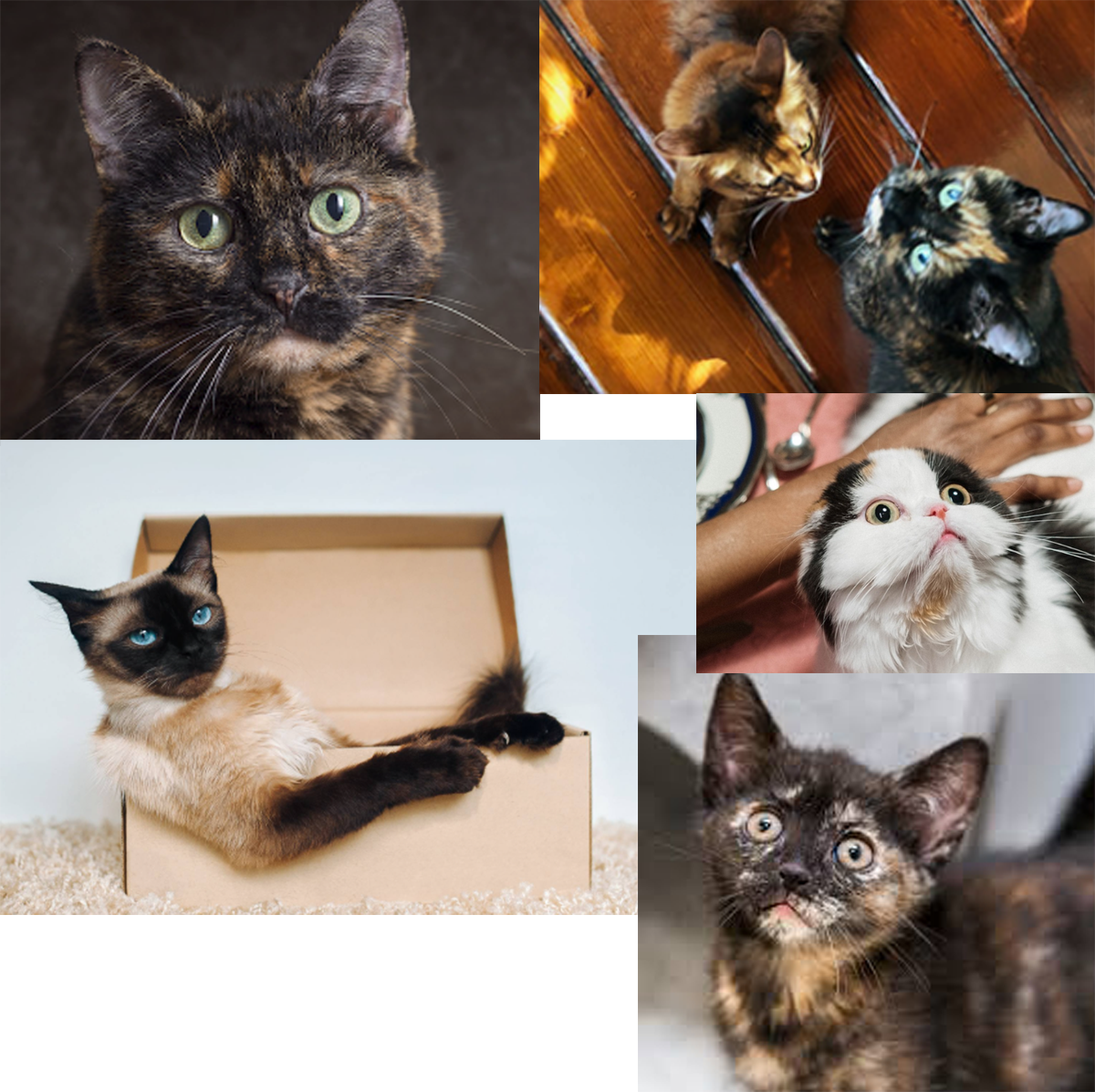
Welcome to the latest blog post from The Cat Whisperer at Snarky Cat Boutique, where we’re diving into the wonderfully quirky world of female cats — with a special love letter to the gorgeous tortoiseshell variety. If you have a tortie (or are eyeing one), get ready for details on what makes these females delightfully peculiar, why they behave the way they do, and how to embrace their singular style.
Female Cat Behaviors — The Big Picture
Female cats aren’t simply “male cats in a smaller size.” They often come with their own palette of behaviors, inclinations and occasional oddities. Here are a few of those general quirks:
- Selective affection: Many female cats choose when they want your lap, your petting, your attention — it’s more often than not on their terms rather than being constantly in demand.
- Territory and routine-oriented: Females frequently prefer a predictable environment. Change things up (new furniture, rearranged shelves, different humans around) and you might see a flick of the tail or a disapproving glance.
- Vocal timing: Whether it’s asking for food, letting you know her boundaries, or simply chattering at nothing (yes — they do that), female cats often have subtle or not-so-subtle vocal moods.
- Maternal echoes: Even when spayed and not raising kittens, many female cats show inklings of “nesting” behaviors — choosing a special spot, guarding it, carrying toys or small objects around.
- Multi-taskers (with attitude): A female cat may watch you unapologetically while she’s cleaning herself, toss a toy in the air while perched on something high, and then demand a treat — all in quick succession. Because she can.
Spotlight on the Tortoiseshell Cat — “Tortie” Magic
Now let’s zoom in on the star of the show: the tortoiseshell cat. These are fascinating felines — visually distinctive, genetically unique, and behaviourally rich.
Why mostly female?
The tortoiseshell coat pattern comes about because of how the black/orange-(and sometimes cream) coat colour genes use the X chromosome. Female cats (XX) can carry two different colour genes and thus express that patchwork of orange & black. Male cats (XY) basically cannot, unless there’s a genetic oddity (XXY, etc).
In short: most torties = females.
What’s “tortitude”?
“Tortitude” is the playful (and sometimes exasperated) term used to describe the often-observed spunky personality traits of tortie cats.
Some of the most cited quirks:
- Strong-willed / independent: Torties often like their schedule, their space, their spot. They might tolerate you, invite you, ignore you — on their terms.
- Vocal and expressive: They will make their opinions known. Whether it’s meows, chirps, purrs, or a pointed hiss.
- Unpredictable mood swings: One moment cuddly, the next perhaps a swipe if you overstep. Their “diva” behaviour is part of their charm.
- Affectionate — but only when they want: Despite the feistiness, many torties bond deeply with their humans. They just like to choose the moment.
- High energy / playful streak: Some torties love to pounce, explore high perches, investigate places humans forget exist.
Why do torties act like this? Some possible reasons:
- Genetic factors: While coat colour itself isn’t guaranteed to dictate personality, there is research indicating torties (and calicos) may show certain behavioral patterns (more independent, more likely to hiss/scratch) than average.
- Gender & hormones: Being female (and in many cases spayed but still retaining some “female cat essence”) may drive certain behaviors around independence, order, routine, territory.
- Individual variation: Remember: coat‐pattern doesn’t cause personality. Breed, upbringing, socialisation, environment— all come into play. Many torties are perfectly chill.
- Environment & stimulation: A high-energy tortie in a quiet, un-challenging home might redirect her energy into mischief; one in a rich environment (toys, climbing spaces, safe outdoor time) will channel her spunk in positive ways.
Quirky Behaviours You Might See — and What They Mean
Here’s a list of typical quirky behaviors you might observe in a female cat, especially a tortie — what they look like, and how to interpret them.
| Bahavior | Explanation | Tip |
|---|---|---|
| Staring you down when you move a beloved shelf / change the room | Change = threat or at least un-welcome surprise to her routine. | Let her investigate slowly; give her a safe perch to observe. |
| Hyper-vocal around meal times — or just to announce presence | She’s got things she wants you to know. Could be feeding, could be “why are you there?” | Respond on her timeline. Use gentle talk rather than rushing. |
| Sudden pounce from high place (even if target is your foot or a shadow) | Big cat instincts + curiosity + a dash of “why not?” | Provide climbing shelves, interactive toys, chase games. |
| Cuddling in bursts, then vanishing to do solitary grooming | Affection on her terms, followed by her “me‐time”. | Respect the pause. Don’t force what must come naturally. |
| “Bossing” other pets (if she has them) — a swat, a hiss, a tunnel-led takeover | She may assert dominance or guard her space. | Ensure each pet has its own safe space. Observe how she interacts. |
| Eye “talk” — slow blink, intense gaze, then glancing away | She’s communicating: “I’m watching you,” or “I’m chill right now.” | Slow blink back: helps build trust. Let her lead. |
Ciao,

Written for The Cat Whisperer Blog by Annie St. Germain, resident Cat Whisperer and chronicler at Snarky Cat Boutique. 🐾







